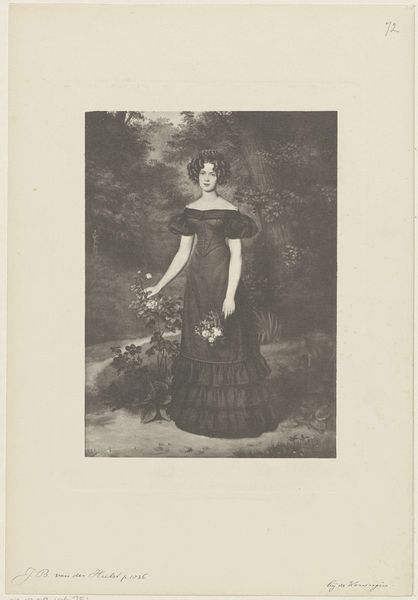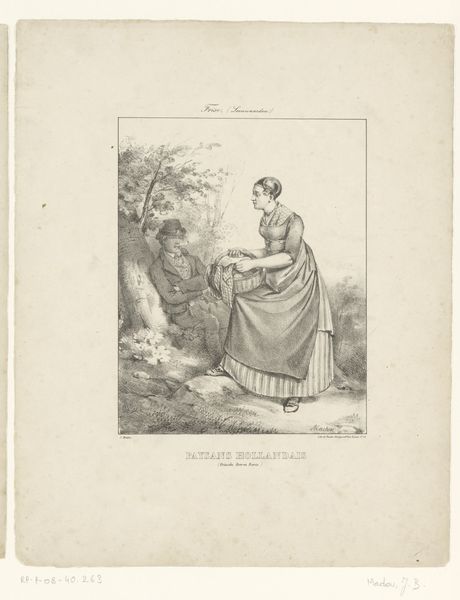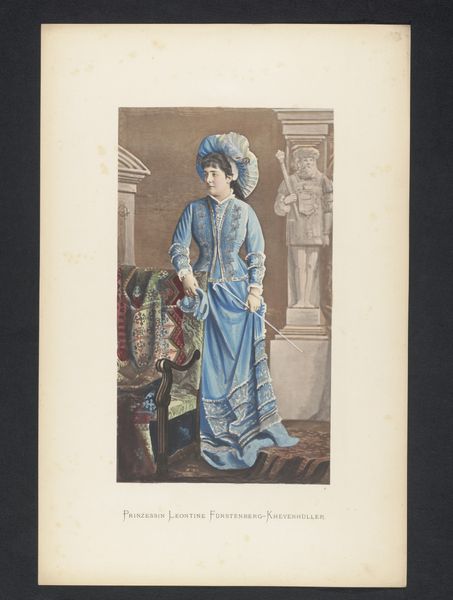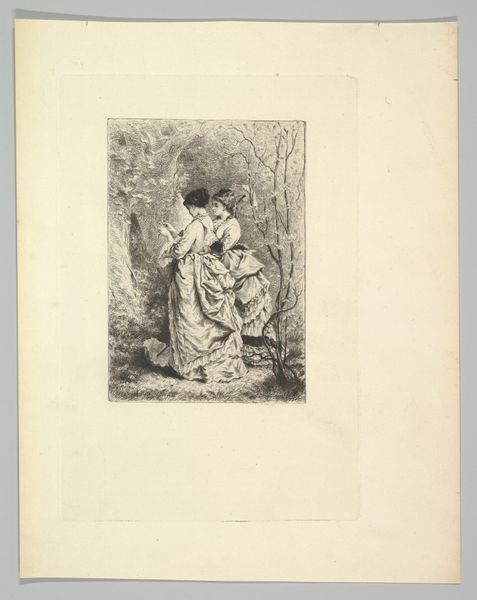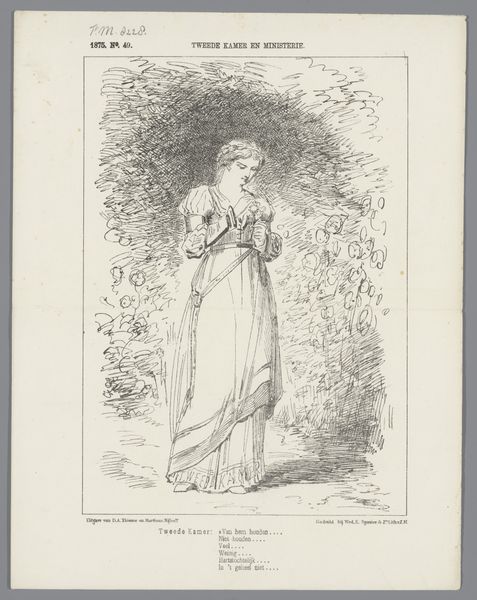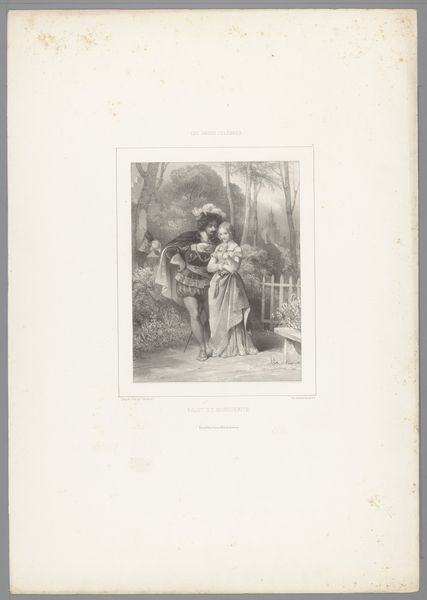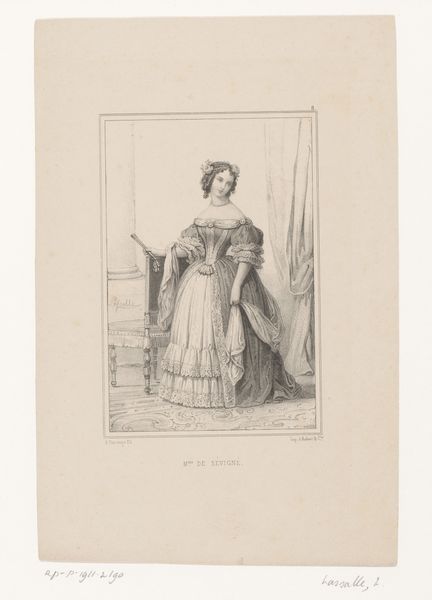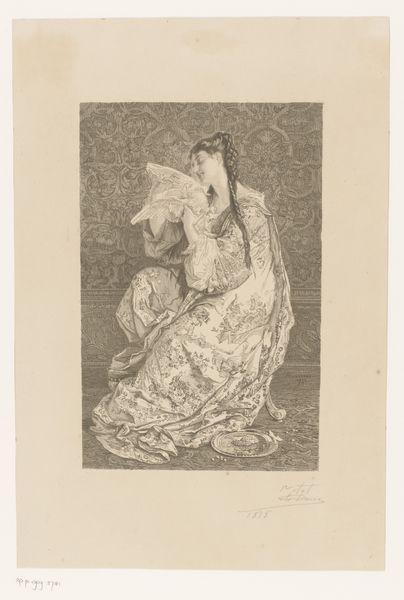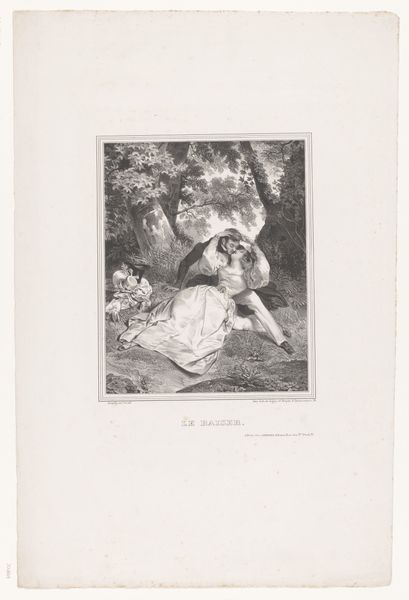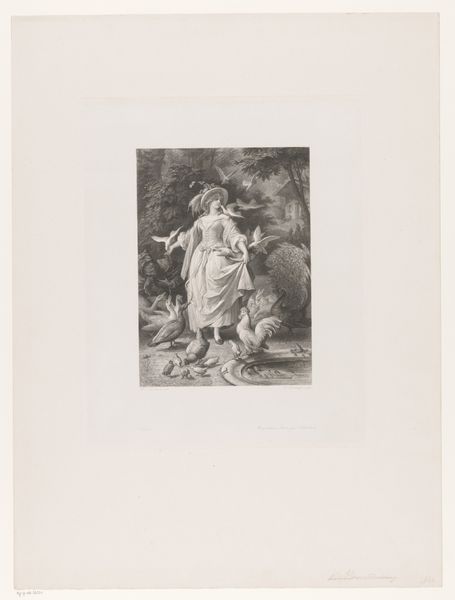
Dimensions: height 199 mm, width 102 mm
Copyright: Rijks Museum: Open Domain
Curator: Here we have "Young Woman in a Forest with Flowers in Her Hand," an etching by Jos Ratinckx, created in 1888. Editor: It evokes a distinct mood—a sort of wistful dreaminess, wouldn’t you agree? The light and dark contrasts create a sense of mystery and soft nostalgia. Curator: Definitely. Look closely at the etching technique. Ratinckx skillfully manipulated line and tone to suggest both form and the textures of her clothing, and the surrounding forest. The very making of an etching itself is a process, involving acid and resistant grounds to gradually build up the image through repeated bitings. It’s laborious and highly skilled, often seen as crossing a boundary between craft and the more celebrated art forms. Editor: Indeed. Beyond the skilled craft, observe the subject matter. The woman, elegantly dressed with her flowers, seems to almost merge with the forest itself. Flowers held in the hands signify youthful innocence and budding womanhood—familiar iconography in depictions of women across art history. Consider how nature is almost embracing her. Curator: The symbolism fits neatly within Romanticism's fascination with nature, yes. Though you have to recognize that prints and drawings like this were made to be consumed. Reproduction enabled a wider dissemination of imagery, playing into social constructs of femininity, beauty, and status within that era. Consider, also, the labor involved not only in the art but also her adornment. Editor: The Romantic era was a complicated space, grappling with tradition. The flowers do carry an innocence, but their presentation and abundance might reference an unattainable or idealized version of beauty, which connects the artwork to broader social narratives, agreed. It reminds me of similar tropes found in Pre-Raphaelite paintings of the time. Curator: An interesting link to draw. So, thinking about our dialogue, considering materials, methods, meanings, have your feelings about the work shifted at all? Editor: Seeing it contextualized with your emphasis on technique and how the imagery can propagate ideologies, my wistful dreaminess has transformed slightly. I am appreciative of how delicate and thoughtful this print and process actually is, as well as the significance it had to communicate through visual language in its time. Curator: And, likewise, considering your point of view, I recognize I may have undermined, or at least undersold, the cultural resonance this type of portrait carries, especially when considering ideas around gendered expectation and expression.
Comments
No comments
Be the first to comment and join the conversation on the ultimate creative platform.


